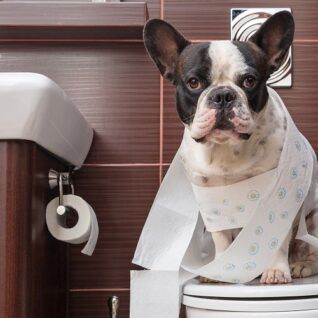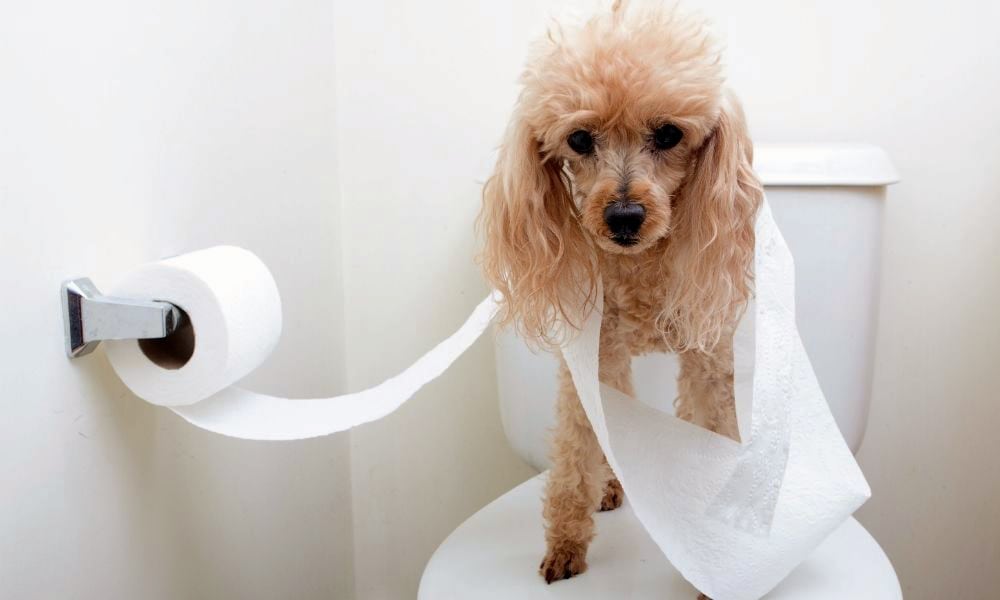An Dangers of Flushing Animal Waste Down the Toilet
An Dangers of Flushing Animal Waste Down the Toilet
Blog Article
The article below in relation to Don't Flush Your Pets Poo Down The Loo, Vet Warns is extremely stimulating. You should keep reading.

When it pertains to getting rid of waste, specifically animal waste, many individuals usually turn to the convenient option of flushing it down the toilet. Nonetheless, this seemingly easy service can have major effects for the setting and public health. In this write-up, we'll check out why flushing pet waste down the commode is a bad idea and supply different approaches for correct disposal.
Intro
Appropriate garbage disposal is essential for preserving ecological sustainability and public health. While it might appear harmless to flush animal waste down the commode, it can bring about various concerns, both for the environment and human wellness.
Dangers of flushing pet waste
Environmental effect
Purging pet waste presents unsafe microorganisms and microorganisms into rivers, which can negatively affect marine environments. These microorganisms can contaminate water resources and damage marine life, disrupting fragile ecological communities.
Public health problems
Animal waste includes damaging microorganisms such as E. coli and Salmonella, which can position serious health dangers to people. Purging pet waste down the toilet can infect water supplies, causing the spread of diseases and infections.
Alternatives to flushing
Rather than purging pet waste down the bathroom, there are numerous alternative disposal techniques that are much more environmentally friendly and hygienic.
Composting
Composting pet waste is an eco-friendly method to get rid of it. By composting, raw material is broken down into nutrient-rich dirt, which can be utilized to fertilize gardens and plants.
Garbage dump disposal
Getting rid of animal waste in a garbage dump is an additional alternative. While not as eco-friendly as composting, it is a much safer choice to flushing, as it avoids the contamination of water resources.
Animal waste disposal systems
There are specific animal waste disposal systems available that securely and hygienically dispose of animal waste. These systems usually utilize enzymes to break down waste and get rid of smells.
Steps to proper animal waste disposal
To make sure appropriate disposal of pet waste, adhere to these steps:
Scooping and bagging waste
On a regular basis scoop and bag animal waste making use of naturally degradable bags. This stops waste from contaminating the setting.
Using assigned waste containers
Dispose of bagged pet waste in marked waste bins, such as compost containers or landfill bins. Avoid flushing it down the toilet whatsoever prices.
Cleaning up litter boxes and pet dog locations consistently
Frequently tidy can and pet areas to avoid the buildup of waste and microorganisms. Usage pet-safe cleaning products to preserve health.
Advantages of correct disposal methods
Adopting appropriate disposal approaches for pet waste uses a number of advantages:
Minimized environmental pollution
Appropriate disposal techniques decrease the threat of environmental pollution, securing waterways and communities from contamination
Minimized threat of water contamination.
By avoiding flushing pet waste down the bathroom, the risk of water contamination is considerably lowered, protecting public health.
Boosted hygiene and hygiene
Appropriate disposal approaches promote far better hygiene and hygiene, creating a much safer environment for both human beings and pets.
Verdict
In conclusion, purging animal waste down the commode is harmful to the environment and public health. By taking on alternate disposal approaches and adhering to proper waste management practices, we can minimize the negative impact of pet waste and add to a cleaner, healthier planet.
What To Do With Dog Poo – The Do's And Don'ts Of Disposing Of Faeces
Dog poo bins
Some councils provide dedicated dog waste bins in popular dog-walking areas that can take dog poo that has been bagged but you can legally dispose of dog waste in any public litter bin, as long as it is securely bagged. This also applies to your wheelie bin at home.
Do not flush
Water companies do not recommend flushing dog faeces down the toilet because certain parasites can survive the water processing treatment and are potentially harmful to humans. You should also never consider flushing dog poo that has been bagged down the toilet as the bags will not break down and instead create severe blockages in the sewage system.
In the woods
The Forestry Commission promotes a ‘stick and flick’ method for dealing with waste in the woods. This means finding a stick and using it to flick any poo from off the path so that it is out of the way of other walkers. You could also bury it as long as it is not in an area where there might be livestock.
Livestock
Parasites found in dog poo can be transmitted to livestock if they inadvertently eat infected faeces that has been left on grazing land. This could result in the death of sheep or abortion in cattle so you should always make sure you pick up your dog’s waste in fields where livestock could be present.

Frequently tidy can and pet areas to avoid the buildup of waste and microorganisms. Usage pet-safe cleaning products to preserve health.
Advantages of correct disposal methods
Adopting appropriate disposal approaches for pet waste uses a number of advantages:
Minimized environmental pollution
Appropriate disposal techniques decrease the threat of environmental pollution, securing waterways and communities from contamination
Minimized threat of water contamination.
By avoiding flushing pet waste down the bathroom, the risk of water contamination is considerably lowered, protecting public health.
Boosted hygiene and hygiene
Appropriate disposal approaches promote far better hygiene and hygiene, creating a much safer environment for both human beings and pets.
Verdict
In conclusion, purging animal waste down the commode is harmful to the environment and public health. By taking on alternate disposal approaches and adhering to proper waste management practices, we can minimize the negative impact of pet waste and add to a cleaner, healthier planet.
What To Do With Dog Poo – The Do's And Don'ts Of Disposing Of Faeces
Dog poo bins
Some councils provide dedicated dog waste bins in popular dog-walking areas that can take dog poo that has been bagged but you can legally dispose of dog waste in any public litter bin, as long as it is securely bagged. This also applies to your wheelie bin at home.
Do not flush
Water companies do not recommend flushing dog faeces down the toilet because certain parasites can survive the water processing treatment and are potentially harmful to humans. You should also never consider flushing dog poo that has been bagged down the toilet as the bags will not break down and instead create severe blockages in the sewage system.
In the woods
The Forestry Commission promotes a ‘stick and flick’ method for dealing with waste in the woods. This means finding a stick and using it to flick any poo from off the path so that it is out of the way of other walkers. You could also bury it as long as it is not in an area where there might be livestock.
Livestock
Parasites found in dog poo can be transmitted to livestock if they inadvertently eat infected faeces that has been left on grazing land. This could result in the death of sheep or abortion in cattle so you should always make sure you pick up your dog’s waste in fields where livestock could be present.

I am just very fascinated by 4 Reasons Why Dog Poop Cleanup is Important and I'm hoping you enjoyed the post. Are you aware of somebody else who is interested in the topic? Do not hesitate to share it. We thank you for reading our article about Can You Flush Dog and Cat Poo Down the Toilet?.
Click Here Report this page